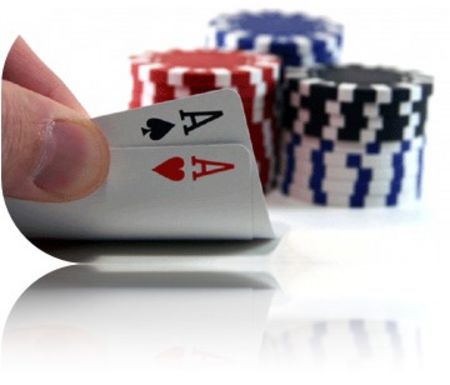Two Pair

The strategies presented in this chapter are for two pair when you match both your
hole cards with two of the flop cards. If there is a pair on the flop, then strategy is
more like playing either an overpair/top pair, or middle/bottom pair. For example, if
the flop is T55 and you have JT, I treat this like top pair for strategy purposes. You
will flop two pair matching both hole cards approximately once every 50 hands.
Similar to sets, your main concerns with two pair are flushes, straights, and strong
draws to these hands. One good thing about two pair is that you can be less
worried about your opponents holding a set since you have two of the flop cards in
your hand.
Two pair can also lose to a higher two pair, so your hand is more vulnerable when
you have bottom two pair. For example, if you hold 97 with a J97 flop and your
opponent holds a jack, your hand is vulnerable to another jack landing, a running
pair on the next two cards, or your opponent hitting his kicker card. Another
situation that can occur is when you are against an overpair and flop two pair. If the
board pairs and it is not one of your two pair, you will lose to a higher two pair.
Strategies for two pair are similar to the strategies when you hold a set; however, if
you hold top two pair, it is less likely that an opponent will bet since you hold two of
the top flop cards in your hand. Therefore, you need to be even more careful not to
give free cards. Let's look at the different flop types and discuss potential strategies.
Three-suited or Three-connected
These types of flops are very dangerous for two pair. You could already be beaten
or there is a good chance that an opponent has a good draw. Almost always bet out
into one or two opponents since you do not want to give a free card. If an opponent
bets, you can either raise the flop, or just call and wait to see if the turn card is
favorable.
Your betting strategies may change somewhat when there are several opponents in
the hand. There is a higher chance that you are already beat, and if not, it is likely
that you are against a good draw. In situations like these, it may be best to just
check and call and wait to see if the turn card is favorable. If the turn card is
favorable and you feel you have the best hand, you can either bet or raise to drive
out players. If you suspect that you might be against a made hand, you need to
decide whether you should fold or continue playing to the river with a draw.
Note that two pair cannot be played as strongly as a set. A yet can almost always
be played to the river since you have so many outs; therefore, you can usually stay
the aggressor by raising or reraising even though there is the possibility that you
are beaten. Compare this to two pair, which only has four outs if an opponent has
you beaten. Your draw is not nearly as strong; therefore, sometimes you will need
to fold when it becomes obvious that an opponent holds a better hand.
NEXT...Two-suited

